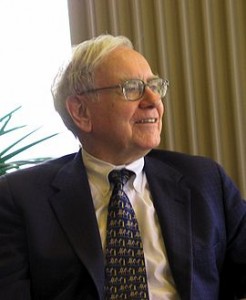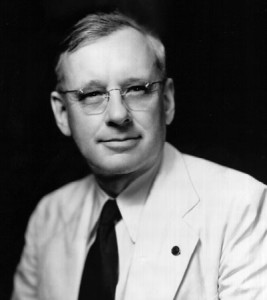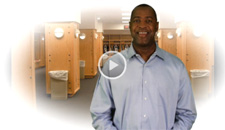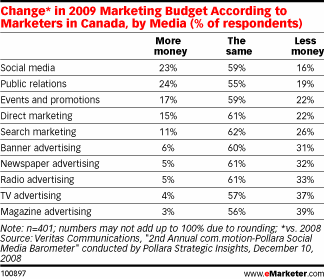The Columbia Journalism Review explores the changes at The Wall Street Journal that have made it an enigma among US newspapers. In an atmosphere of decline and panic, the Journal is growing both print and online subscriptions. While its advertising revenue has suffered along with the rest of the industry’s, there is a sense that this paper is doing something right. It’s “moving the needle,” as journalist Liz Featherstone notes at the outset of her 3,300-word analysis.
Moving the needle is apparently a sore spot at the Journal. Some people see the phrase as a euphemism for dumbing down the content, and their opinion has some merit. A 3,300-word analysis like Featherstone’s would have a tough time getting in the paper these days. Featherstone counted a dozen stories of over 2,000 words in the front section during a one-week period in 2007. In a more recent comparison, that total had dwindled to three. Instead, the Journal has got reporters chasing news in general and The New York Times in particular. Stories are shorter, reporters are running from press conference to press conference and the Journal no longer seems to regard its mission as being to explain capitalism. Instead, it’s becoming a hard news-driven international wire service with a specialty in business topics.
Reader Focus
 Under new editor Robert Thomson (left, WSJ photo), the paper has become more focused on giving his readers what they want, even if that isn’t what the journalists like. Featherstone snagged an interview with Thomson, who refers disdainfully to some newspapers as being written more for journalists than for their readers. The reference is clearly to the Journal itself.
Under new editor Robert Thomson (left, WSJ photo), the paper has become more focused on giving his readers what they want, even if that isn’t what the journalists like. Featherstone snagged an interview with Thomson, who refers disdainfully to some newspapers as being written more for journalists than for their readers. The reference is clearly to the Journal itself.
Thomson sees today’s constantly distracted, media-agnostic reader as needing quick information delivered in plain language. Some see this approach as a heretical rejection of the principles of legendary editor Barney Kilgore, who guided the paper for 27 years and who oversaw its meteoric growth. But others believe Thomson is simply staying true to Kilgore’s principles of giving readers what they want, rather than what journalists think they need.
The Journal story isn’t a simple one. While Rupert Murdoch has clearly put his stamp on the organization he acquired for more than $5 billion nearly two years ago, fears that he would meddle with the paper’s editorial voice haven’t materialized. Murdoch has also proven to be strikingly eager to support editorial quality, such as when he personally stepped in to prevent the government of China from denying a visa to a Journal Beijing reporter.
Many journalists have found themselves at odds with the new direction of the paper and have left with thinly disguised disgust. But others are fully on board with management’s efforts to make the Journal more relevant to its audience in an effort to insure its long-term vitality. This story is a balanced account of a journalistic institution in the midst of a transition that has torn at the fabric of its organizational values but that is clearly succeeding in the marketplace. For better or for worse.
Miscellany
There are limitations to how far one should go in giving readers what they want, of course. The Chicago Tribune apparently stepped over that line recently with an experimental project initiated by the marketing department to seek feedback on stories that hadn’t yet been published or even fully reported. A group of reporters didn’t like this idea one bit, and 55 of them signed an angry e-mail in protest. Editor Gerould Kern quickly backtracked, issuing a statement calling the experiment “a brief market research project that tested reader reaction to working story ideas.”
The Trib went too far, says Newsosaur Alan Mutter, but the fundamental idea has merit. Mutter sees nothing with using a little market research to shape content, even if it’s only keeping an eye on the most e-mailed stories. He relates the practice of one South American newspaper that posts stories to a website as soon after they clear editing but before they appear in print. Editors then monitor online activity through the evening and take reader interest into account in laying out pages.
The rule of thumb with buyouts is to take them early because the terms get worse as time passes. Now we’re seeing news organizations do away with severance packages entirely. It happened at the Reading Eagle last week, where 52 staffers were shown the door with just two weeks of health insurance coverage to tide them over. One of the laid-off employees had been with the paper for 45 years.
The Memphis Commercial Appeal just laid off 19 newsroom people without any severance, according to one of the victims, who contacted us. What they did get was instructions on how to tap into their Guild Retirement Income Plan at a penalty of 10% plus tax withholding at 20%. Or laid-off employees could elect a lump sum payment from the plan, which would lead them with retirement annuities of less than $10 a month, in some cases. “Will that even pay for a prescription for ‘sugar diabetes’ medicine?” the former employee asks. “I’m in my 40s but everybody over 65 in my family has the ‘sugar diabetes,’ as we call it here in the South.”
The Atlanta Journal-Constitution, which has been hemorrhaging readership, has got a clever new campaign to promote coziness within the newspaper. Called “Unplug. It’s Sunday,” the promotion positions “the old-school Sunday newspaper as a refuge from the constant buzzing and beeping of smart phones, instant messages and e-mail that marks the modern workweek,” according to a short article in AdWeek. We think it’s a great idea.
And Finally…
 Does Lindsay Lohan really look like Gollum from The Lord of the Rings trilogy? You decide. TotallyLooksLike.com will help you make the decision. The site has scores of photo pairs contrasting well-known celebrities with other figures who bear a striking resemblance to them, although we’re sure the likeness wasn’t intentional. Does Mary Kate Olson Totally Look Like Ozzy Osbourne? We didn’t think so till we saw the two in their separated-at-birth photo. See for yourself. You’ll be sharing the images with your friends within minutes. We guarantee it. Use Facebook.
Does Lindsay Lohan really look like Gollum from The Lord of the Rings trilogy? You decide. TotallyLooksLike.com will help you make the decision. The site has scores of photo pairs contrasting well-known celebrities with other figures who bear a striking resemblance to them, although we’re sure the likeness wasn’t intentional. Does Mary Kate Olson Totally Look Like Ozzy Osbourne? We didn’t think so till we saw the two in their separated-at-birth photo. See for yourself. You’ll be sharing the images with your friends within minutes. We guarantee it. Use Facebook.
 You could do a lot worse than spend the next 20 minutes reading Jason Pontin’s
You could do a lot worse than spend the next 20 minutes reading Jason Pontin’s  As negotiations with the Boston Globe‘s unions continued past a midnight deadline, The New York Times Co. filed notice with the federal government today of its
As negotiations with the Boston Globe‘s unions continued past a midnight deadline, The New York Times Co. filed notice with the federal government today of its  Billionaire investor Warren Buffett reads five newspapers every day, but he
Billionaire investor Warren Buffett reads five newspapers every day, but he  The New York Times Co.
The New York Times Co. 



 The Boston Globe, evidently tired of all the razzing it was getting about its threatened shutdown,
The Boston Globe, evidently tired of all the razzing it was getting about its threatened shutdown,  Sam Zell now admits that his highly leveraged 2007 purchase of Tribune Co.
Sam Zell now admits that his highly leveraged 2007 purchase of Tribune Co.  Eric Alterman (right)
Eric Alterman (right) 


